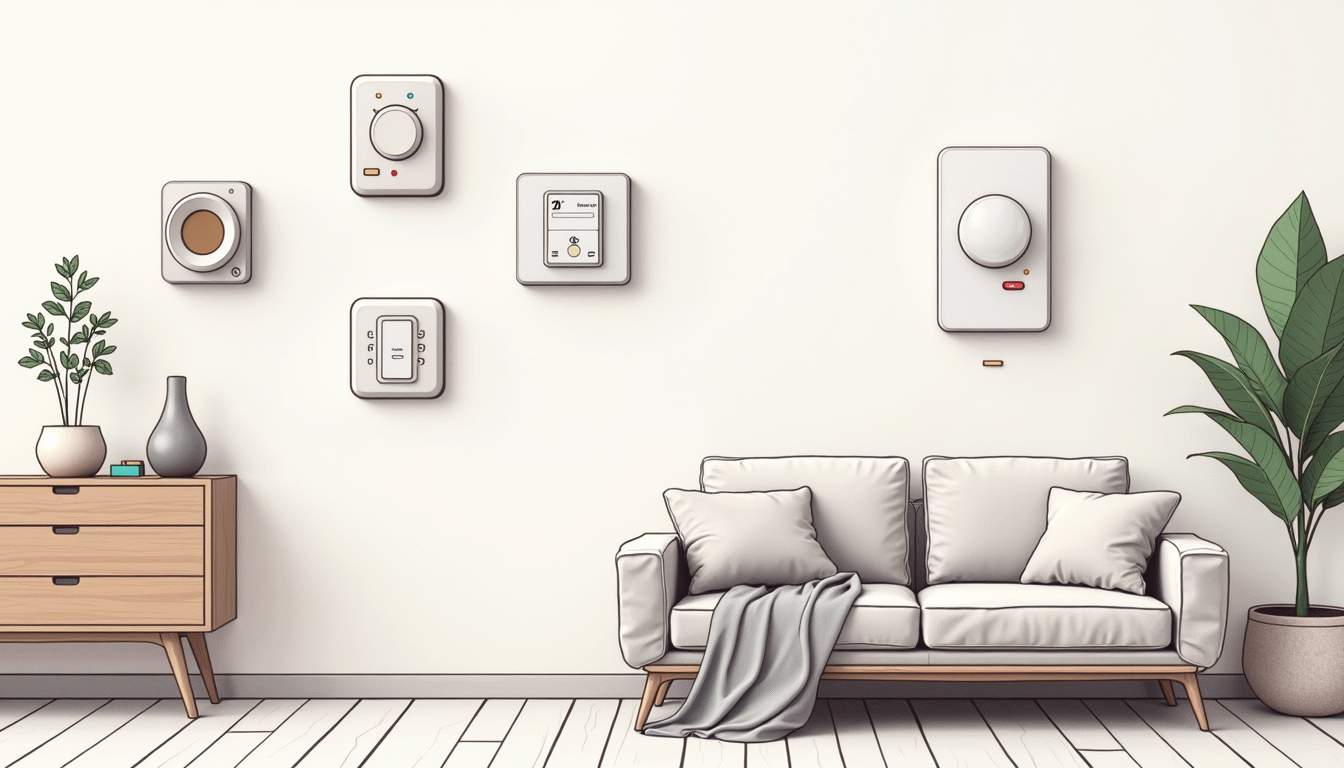
Top CO Sensor Options for Ensuring Home Safety
Carbon monoxide (CO) is a colorless, odorless gas that can pose a serious threat to your health and safety. It is produced by burning fossil fuels, and its presence in homes is often linked to appliances like furnaces, stoves, and water heaters. To protect your family, investing in a reliable CO sensor is essential. In this article, we will explore some of the best CO sensor options available, ensuring that you can make an informed decision for your home safety.
Understanding Carbon Monoxide Risks
Before diving into the best CO sensor options, it's crucial to understand the risks associated with carbon monoxide exposure. CO can cause symptoms ranging from headaches and dizziness to severe health issues, including loss of consciousness and even death in extreme cases. This colorless, odorless gas is particularly insidious, as it can build up in enclosed spaces without any warning signs, making it a silent threat in many households.
Every year, thousands of people are hospitalized due to CO poisoning, making awareness and prevention vital. Knowing how CO accumulates in your home and the appliances that might produce it can help you take proactive measures to protect your loved ones. Awareness campaigns and educational programs are essential in spreading the word about the dangers of carbon monoxide, particularly in communities where gas appliances are common. Simple actions, such as regular maintenance checks and educating family members about the risks, can significantly reduce the likelihood of exposure.
Sources of Carbon Monoxide
Common sources of carbon monoxide in residential settings include gas-fired appliances, such as furnaces, water heaters, and stoves. Even vehicles running in attached garages can contribute to CO buildup. It's crucial to ensure that these appliances are properly maintained and vented to minimize the risk of CO accumulation. Regular inspections by qualified technicians can help identify potential issues before they become serious hazards. Additionally, homeowners should be aware of the signs of malfunctioning appliances, such as yellow or orange flames instead of blue, which can indicate incomplete combustion and increased CO production.
Additionally, using charcoal grills or gas-powered generators indoors can lead to dangerous levels of carbon monoxide. Always be cautious and ensure proper ventilation when using such devices. It's also important to remember that CO can seep from outdoor sources, such as nearby traffic or industrial sites, especially in densely populated areas. Installing CO detectors near sleeping areas and on every level of your home is a proactive step that can alert you to dangerous levels of this gas before it becomes a life-threatening situation.
Symptoms of Carbon Monoxide Poisoning
Recognizing the symptoms of carbon monoxide poisoning can be lifesaving. Early signs include headaches, nausea, shortness of breath, and confusion. If you or anyone in your home experiences these symptoms, it's essential to move to fresh air immediately and seek medical attention. In some cases, symptoms may be mistaken for the flu or other illnesses, which can delay critical treatment. Understanding the unique characteristics of CO poisoning can empower individuals to act quickly and decisively in emergency situations.
Long-term exposure to low levels of CO can also lead to chronic health issues, making it even more critical to have a CO sensor installed in your home. Research has shown that even minimal exposure can affect cognitive function and cardiovascular health over time. Families should consider creating a safety plan that includes regular checks of CO detectors, ensuring they are functioning correctly and have fresh batteries. This proactive approach not only enhances safety but also fosters a culture of awareness and responsibility regarding carbon monoxide risks in the home.
Choosing the Right CO Sensor
When selecting a carbon monoxide sensor, there are several factors to consider. The effectiveness of a CO sensor is determined by its technology, features, and ease of use. Here are some key aspects to keep in mind:
Types of CO Sensors
CO sensors come in various types, including electrochemical, biomimetic, and metal oxide semiconductor sensors. Each type has its advantages and disadvantages, making it essential to choose one that fits your needs.
Electrochemical sensors are known for their accuracy and quick response times. They are commonly used in residential settings due to their reliability. Biomimetic sensors use a gel that changes color when exposed to CO, providing a visual indication of danger. Metal oxide semiconductor sensors are less common but can be effective in detecting low levels of CO. It’s also worth noting that some sensors combine multiple technologies to enhance detection capabilities, offering a more comprehensive approach to safety.
Key Features to Look For
When evaluating CO sensors, consider features such as digital displays, battery backup, and connectivity options. A digital display can provide real-time CO levels, helping you monitor the air quality in your home. Battery backup ensures that the sensor remains operational during power outages, while connectivity options allow you to receive alerts on your smartphone.
Additionally, look for sensors with a long lifespan and warranty. A reliable CO sensor should last several years, and having a warranty can provide peace of mind in case of malfunctions. Some advanced models also offer features like self-diagnostics, which can alert you to any issues with the sensor itself, ensuring that it is functioning correctly at all times. Furthermore, consider the placement of the sensor; it should be installed in areas where CO is likely to accumulate, such as near fuel-burning appliances, to maximize its effectiveness.
Another important aspect to consider is the sensitivity level of the sensor. Different sensors may have varying thresholds for detection, meaning that some may alert you to lower levels of carbon monoxide than others. This can be particularly crucial in homes with vulnerable individuals, such as children or the elderly, who may be more susceptible to the effects of CO exposure. Additionally, some sensors come equipped with features that allow them to differentiate between carbon monoxide and other gases, reducing the likelihood of false alarms and ensuring that you are alerted only when it truly matters.
Top CO Sensor Options
Now that we've covered the essential aspects of CO sensors, let's explore some of the top options available on the market today. Each of these sensors has been chosen for its reliability, features, and overall user satisfaction.
1. Nest Protect
The Nest Protect is a smart smoke and carbon monoxide detector that offers advanced features and connectivity. It provides voice alerts, telling you where the danger is, and sends notifications to your smartphone if it detects CO levels. The device also conducts self-tests, ensuring that it is always functioning correctly.
With its sleek design and easy installation, the Nest Protect is an excellent choice for tech-savvy homeowners looking for a reliable CO sensor. Additionally, it integrates seamlessly with other smart home devices, allowing you to monitor your home environment from anywhere. The Nest app not only keeps you informed about CO levels but also provides insights into smoke and air quality, making it a comprehensive safety tool for modern living.
2. Kidde KN-COPP-3
The Kidde KN-COPP-3 is a compact and affordable option that provides reliable carbon monoxide detection. It features a digital display that shows CO levels and has a battery backup for added security. The sensor is easy to install and is suitable for various locations within your home.
With a reputation for quality and performance, the Kidde KN-COPP-3 is a trusted choice for families seeking a dependable CO sensor. Its compact design allows it to fit discreetly in any room, and its digital readout makes it easy to monitor CO levels at a glance. Furthermore, the Kidde brand is known for its commitment to safety, and this model is no exception, having undergone rigorous testing to meet safety standards, ensuring peace of mind for users.
3. First Alert CO400
The First Alert CO400 is a budget-friendly option that does not compromise on safety. This plug-in CO detector has a battery backup and features a simple design for easy use. It provides a loud alarm when CO is detected, ensuring that you are alerted promptly.
For those looking for a straightforward and effective CO sensor, the First Alert CO400 is an excellent choice. Its plug-in design makes it incredibly easy to set up, requiring no complicated installation processes. Additionally, the device is equipped with a test button that allows users to regularly check its functionality, ensuring that it remains in optimal working condition. The First Alert CO400 also includes a low battery indicator, so you’ll never be caught off guard by a dying battery, adding an extra layer of convenience for busy households.
Installation and Maintenance Tips
Installing a CO sensor is a critical step in ensuring your home’s safety. However, proper installation and maintenance are equally important to ensure that the sensor functions effectively. Carbon monoxide is a silent killer, and being proactive about your safety measures can make all the difference in preventing potential tragedies.
Installation Guidelines
When installing CO sensors, place them near sleeping areas and on every level of your home. Avoid placing them too close to fuel-burning appliances, as this may lead to false alarms. Follow the manufacturer's instructions for optimal placement and installation. It’s also wise to install CO sensors in areas where you spend a lot of time, such as living rooms and hallways, to ensure you're alerted promptly in case of a dangerous situation. Additionally, consider using interconnected sensors that can communicate with each other, providing an added layer of safety by alerting you to danger no matter where you are in the home.
For battery-operated sensors, ensure that you replace the batteries at least once a year. If your sensor is hardwired, consider having a professional electrician check the connections periodically. It's also beneficial to keep a record of your installation and maintenance dates, which can help you stay on top of necessary tasks and ensure your safety equipment is always in top condition.
Regular Maintenance
Regular maintenance is essential for keeping your CO sensor in working order. Test the alarm monthly to ensure it is functioning correctly. Clean the sensor according to the manufacturer's instructions to prevent dust buildup, which can affect performance. In addition to cleaning, check the sensor’s LED indicator lights regularly; these lights can provide important information about the status of the device and whether it is functioning properly. If you notice any irregularities, it is crucial to address them immediately.
Finally, replace your CO sensor every 5 to 7 years, as older units may not detect carbon monoxide effectively. During the replacement process, consider upgrading to newer models that may come equipped with advanced features such as digital displays, voice alerts, or smart technology that connects to your home security system. These modern sensors can provide real-time updates and alerts directly to your smartphone, ensuring that you remain informed about your home’s safety even when you’re away.
Conclusion
Investing in a reliable carbon monoxide sensor is a crucial step in safeguarding your home and loved ones from the dangers of CO exposure. By understanding the risks associated with carbon monoxide, choosing the right sensor, and following proper installation and maintenance guidelines, you can ensure a safer living environment.
Whether you opt for a smart device like the Nest Protect or a budget-friendly option like the Kidde KN-COPP-3, the important thing is to take action. Don't wait until it's too late—protect your home with a quality CO sensor today.
